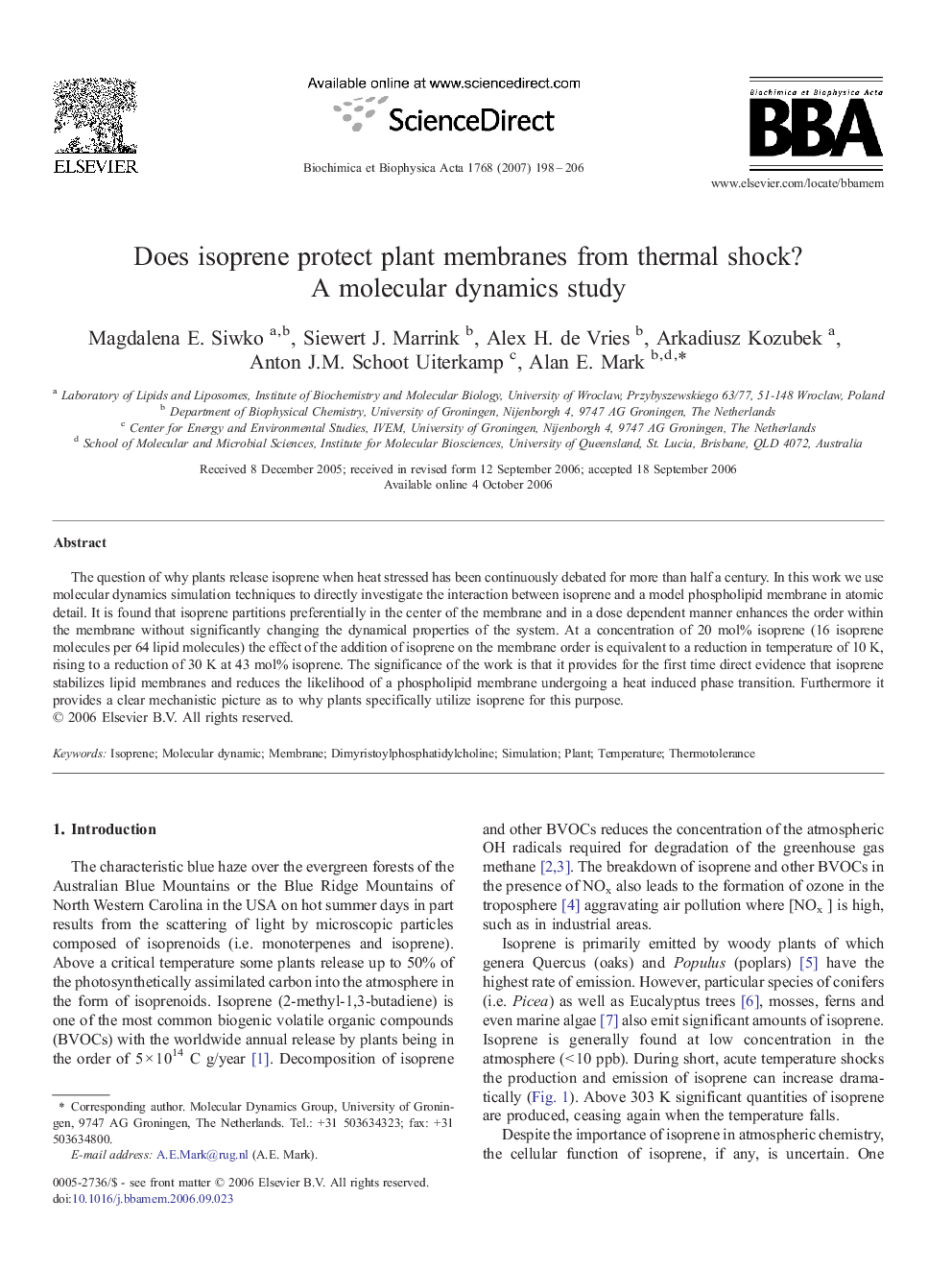| Article ID | Journal | Published Year | Pages | File Type |
|---|---|---|---|---|
| 1945944 | Biochimica et Biophysica Acta (BBA) - Biomembranes | 2007 | 9 Pages |
The question of why plants release isoprene when heat stressed has been continuously debated for more than half a century. In this work we use molecular dynamics simulation techniques to directly investigate the interaction between isoprene and a model phospholipid membrane in atomic detail. It is found that isoprene partitions preferentially in the center of the membrane and in a dose dependent manner enhances the order within the membrane without significantly changing the dynamical properties of the system. At a concentration of 20 mol% isoprene (16 isoprene molecules per 64 lipid molecules) the effect of the addition of isoprene on the membrane order is equivalent to a reduction in temperature of 10 K, rising to a reduction of 30 K at 43 mol% isoprene. The significance of the work is that it provides for the first time direct evidence that isoprene stabilizes lipid membranes and reduces the likelihood of a phospholipid membrane undergoing a heat induced phase transition. Furthermore it provides a clear mechanistic picture as to why plants specifically utilize isoprene for this purpose.
